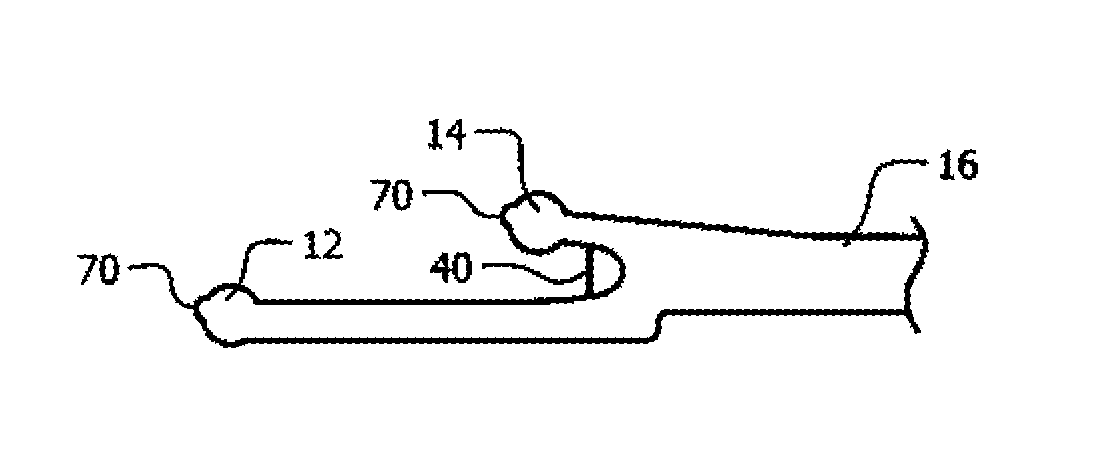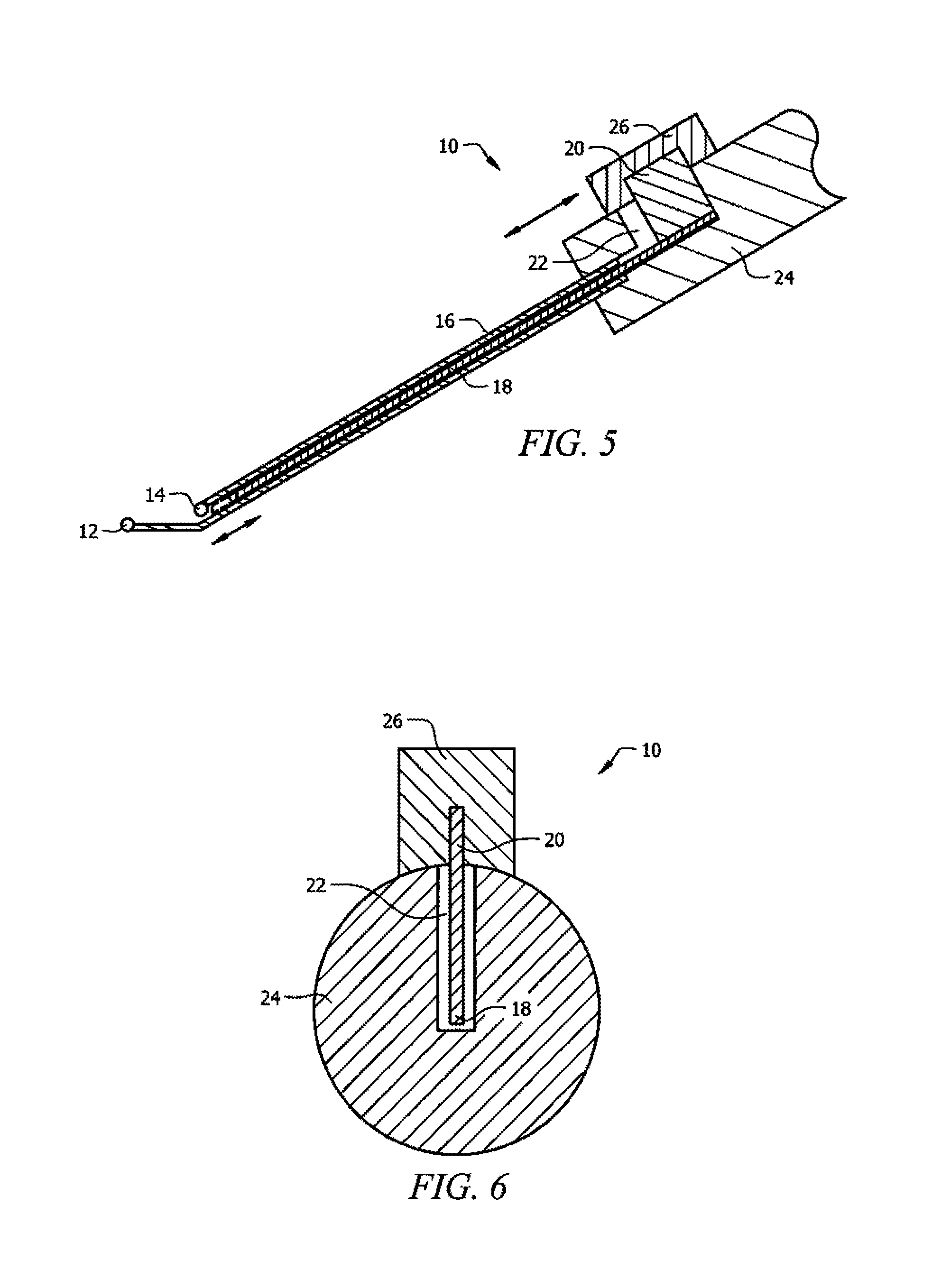Device for minimally invasive tendon sheath release having static blade
a technology of static blade and tendon, which is applied in the field of devices and methods for releasing the tendon sheath, can solve the problems of tendon swelling, pain, and usually occurring pain, and achieve the effect of less expensive and minimally invasiv
- Summary
- Abstract
- Description
- Claims
- Application Information
AI Technical Summary
Benefits of technology
Problems solved by technology
Method used
Image
Examples
Embodiment Construction
[0046]The following detailed description discloses the preferred dimension of an embodiment and shall be interpreted as illustrative and not in a limiting sense. The device is to be commercially known as the trigger tome.
[0047]Spherical tipped guide probe 12, as shown in FIGS. 1-5, includes an about 2.5 cm long stainless steel spherical tipped probe that tapers from its proximal to distal end, with a proximal round diameter of about 2.5 mm and a distal rounded diameter of about 1.0 mm with an about 3.0 mm diameter spherical tip. Spherical tipped guide probe 12 is attached to the bottom part of sheath 16. Spherical tipped guide probe 12 is curved.
[0048]Dorsal outrigger spherical tipped guide 14, as shown in FIGS. 1-5, includes an about 5 mm long by about 1 mm diameter stainless steel spherical tip outrigger that extends from the distal top part of sheath 16 and has an about 2 mm diameter spherical tip at its terminal end. It may extend at about a 20 to 30 degree angle.
[0049]Sheath 16...
PUM
 Login to View More
Login to View More Abstract
Description
Claims
Application Information
 Login to View More
Login to View More - R&D
- Intellectual Property
- Life Sciences
- Materials
- Tech Scout
- Unparalleled Data Quality
- Higher Quality Content
- 60% Fewer Hallucinations
Browse by: Latest US Patents, China's latest patents, Technical Efficacy Thesaurus, Application Domain, Technology Topic, Popular Technical Reports.
© 2025 PatSnap. All rights reserved.Legal|Privacy policy|Modern Slavery Act Transparency Statement|Sitemap|About US| Contact US: help@patsnap.com



